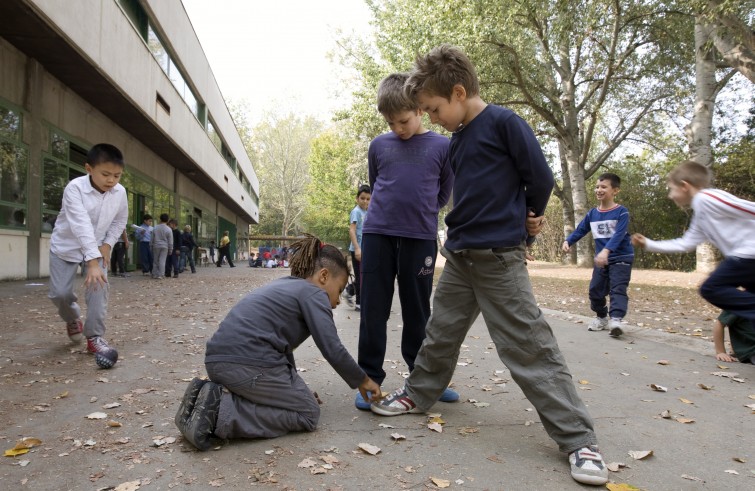INTERNATIONAL CHILDREN’S DAY
Italy ranks among the 10 most child-friendly nations. Norway takes the lead, while Niger is the worst place to be a child. According to a Save the children Report 700 million children, 1 every 4, are denied their childhood.

Niger is the worst world Country to be a child. The first prize goes to Norway, followed by Slovenia and Finland. While surprisingly Italy comes in ninth among the 10 best Countries for children, better than Germany and Belgium. According to the findings, 1 in 4 children worldwide (700 million) are denied their childhood for various reasons: war and persecution, marriage and pregnancies at a young age, child labour, malnutrition and diseases, lack of schooling. The recent report, “Stolen Childhood”, released by Save the children, features the first End of Childhood Index for 172 world Countries. The report is being presented today on the occasion of International Children’s Day. “The fact that in 2017 millions of children continue being stripped of their childhood is unacceptable”, said Valerio Neri, Director General of Save the children.

1 in 80 children are fleeing persecution and wars. in 2016, 1 child in 80 in the world has been forced to leave his home to flee wars and persecution, some 28 million minors. The number includes 10 million child refugees, while 17 million are internally displaced children.
Syria is the Country with the highest number of displaced persons
(over 12 million people, 65% of the overall population), followed by South Sudan, Somalia and Central African Republic, where 20% of the overall population is displaced, 7.5 million in Colombia.
Exposed to violence: over 200 children killed on a daily basis. The ten countries with highest child homicide rates are in Latin America, due to the escalation of violent criminal activity.
In 2015 over 75.000 19-year-olds were murdered worldwide,
amounting to over 200 per day. Honduras, Venezuela and El Salvador are the three worst countries in this tragic ranking (child homicide rates respectively amounting to 33.27% and 22% on a population of 100 thousand boys and girls).
168 million children are involved in child labour. Although the global number of child labourers has declined by one-third since 2000, an estimated 168 million children are still compelled to work to support themselves and their families, more than the present child population in Europe.
Some 85 million children, are doing hazardous work
such as mining, cotton-picking, stone quarrying or textile factory work, waste site scavenging, or are enrolled in the army. The highest rates are found in sub-Saharan Africa, notably in Mali (56%), in Benin (52%), in Guinea Bissau (51%) and in Somalia (49%).

15 million married girls. Globally, one girl under 15 gets married every seven seconds, often forced by her parents to marry much older men. Each year, some 15 million girls marry before reaching the age of 18. Of those, 4 million are married before age 15. The highest rates are found in Niger, where 60% of girls aged 15-19 are married. The Central African Republic ranks second with 55%, followed by Bangladesh (44%) and South Sudan (40%), but this phenomenon was registered also in Europe, where over 1 in ten girls (11%) marry before turning 18.
Every 2 seconds a girl between the age of 15 and 19 gives birth,
amounting to approximately 17 million each year. Most of these births occur in developing Countries (95%). Child brides are at greater risk of contracting sexually transmitted diseases, of suffering domestic violence, or of experiencing dangerous complications at childbirth.
Globally, 16.000 children die before turning 5. Every day, more than 16,000 children die before reaching their 5th birthday, mostly from preventable or treatable causes, which include pneumonia (15%), diarrhea (9%) and malaria (5%). Premature births are the primary cause of death.
The highest rates of child mortality are found in sub-Saharan Africa,
notably in Angola (157 dead children per 1.000 live births), followed by Chad (139), Somalia (137) and Central African Republic (130). The lowest rates are found in Luxembourg (1.9), Iceland (2), Finland (2.3) and Norway (2,6), almost 3.5 in Italy Although the prevalence of stunting among children under age 5 worldwide has been steadily declining – from 40 percent in 1990 to 23 percent in 2015- 156 million children under age 5 have stunted growth due to malnutrition. The highest rates were registered in Burundi (57%), Eritrea (50%) and Timor Est (50%). India ranks first with over 48 million stunted children, amounting to 39% of the child population.

1 in 6 children are out of education. Today more than 1 in 6 children worldwide are out of school, amounting to 263 million school-aged children. Girls are the most disadvantaged Ad essere svantaggiate sono soprattutto le bambine:
About 15 million girls will never have the opportunity to learn to read and write in primary school,
compared to about 10 million boys. South Sudan (67%), Eritrea (63%), Djibouti (60%) and Niger (55%) are the Countries with the highest rates of school-age children out of education, while France ranks first with 0,3%, followed by Spain and the United Kingdom (both at 0.7%). In Italy almost 3 children out of every 100 (2.8%) are out of school. According to the Save the Children report, Refugee children are 5 times more likely to be out of school than non-refugee children.